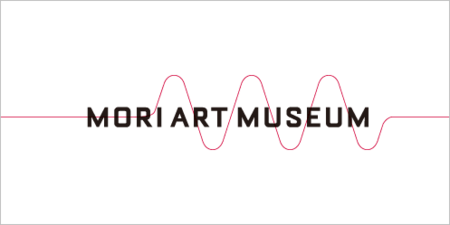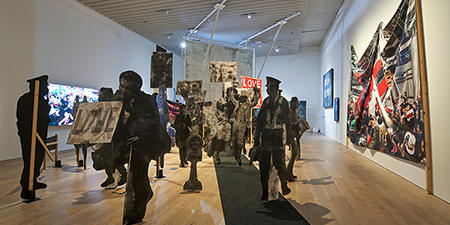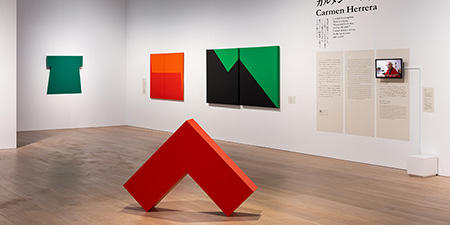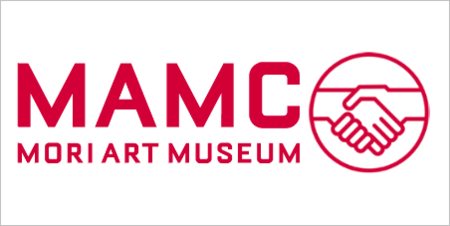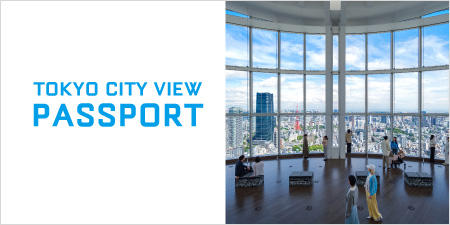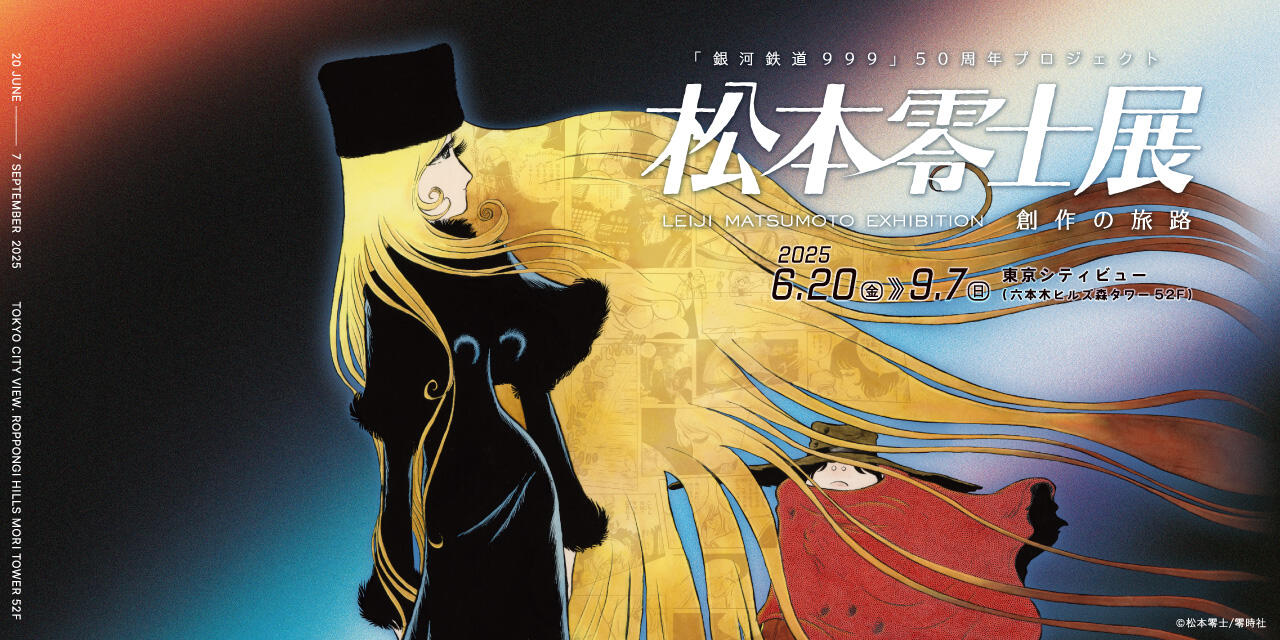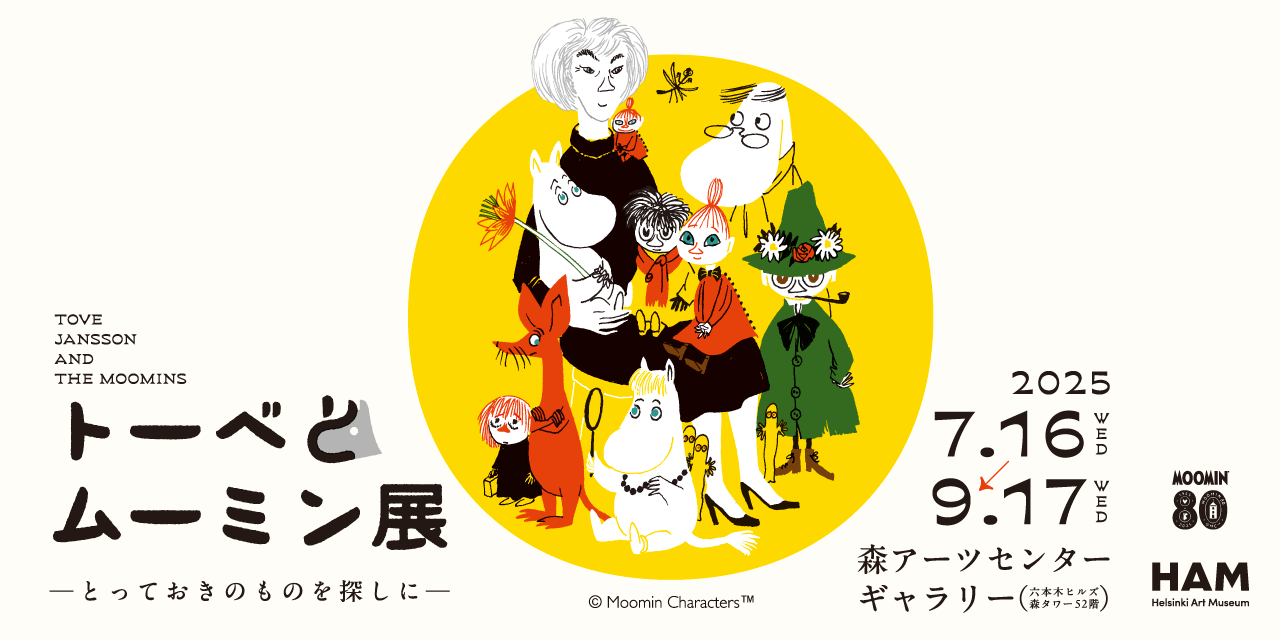Catastrophe and the Power of Art MAMC Night Held Featuring Special Guests from Chim↑Pom!
2019.1.21 [Mon]
On Tuesday, December 18, 2018, a MAMC Night in connection with the Catastrophe and the Power of Art exhibition was held as part of MAMC, Mori Art Museum membership program.
Catastrophe and the Power of Art, staged to mark fifteen years of the Mori Art Museum, looks at how contemporary artists portray catastrophe, and means by which the power of art can help us recover from catastrophe.
The exhibition features 40 artists/artist collectives from Japan and further afield, around a quarter of whom have submitted works related to the Great East Japan Earthquake of 2011. As recovery stalls in some of the affected communities, the exhibition also reflects Catastrophe curator Kondo Kenichi’s desire to call for more effective recovery efforts, and reignite discussion.
The turnout of MAMC members was excellent, and the evening began with a gallery tour by curator Kondo.
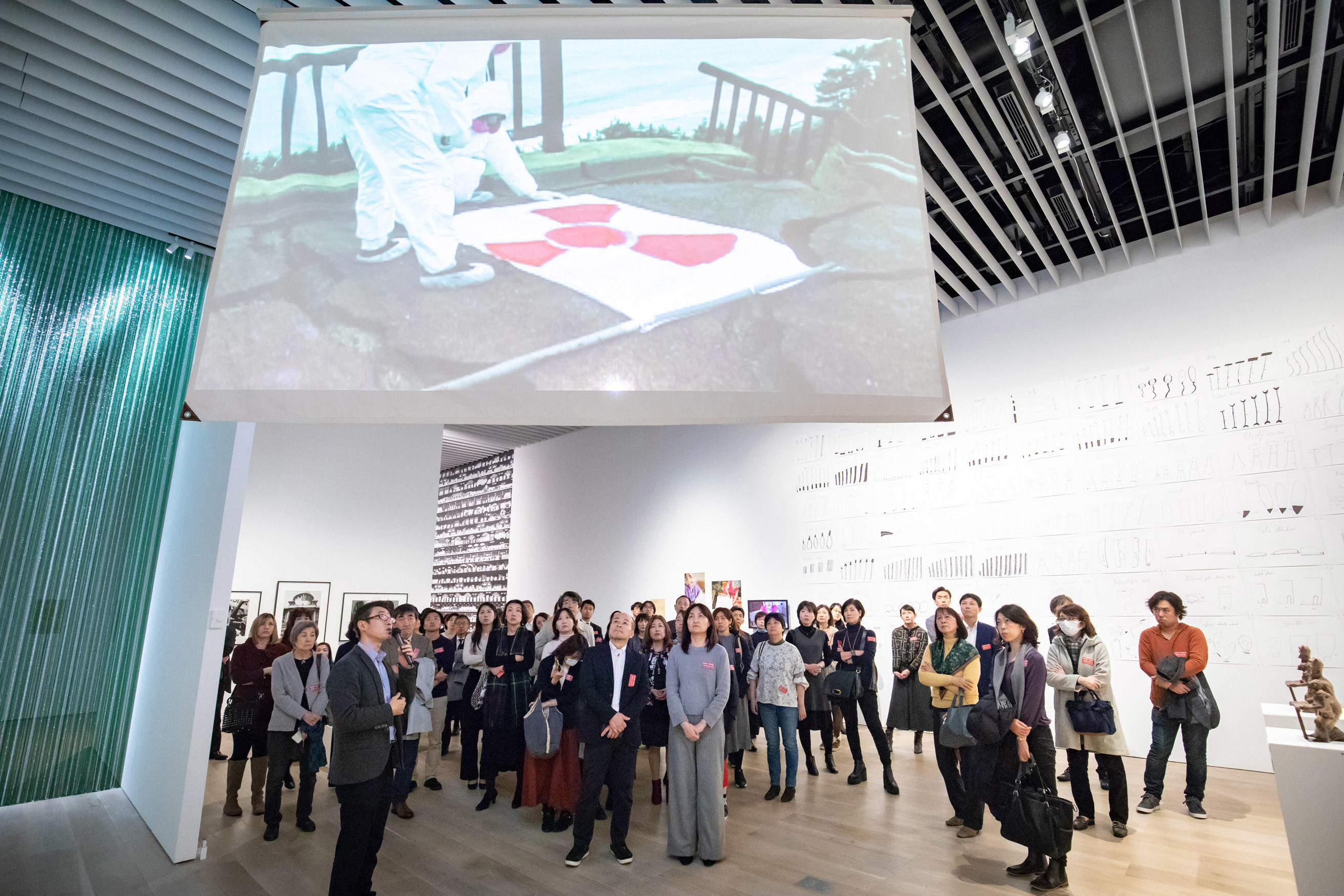

Following the gallery tour, special guests Ushiro Ryuta, leader of artist collective Chim↑Pom, which has works in the exhibition, and fellow Chim↑Pom member Okada Masataka, who rarely appears at talks due to a self-confessed unease with public speaking, took part in a talk event.
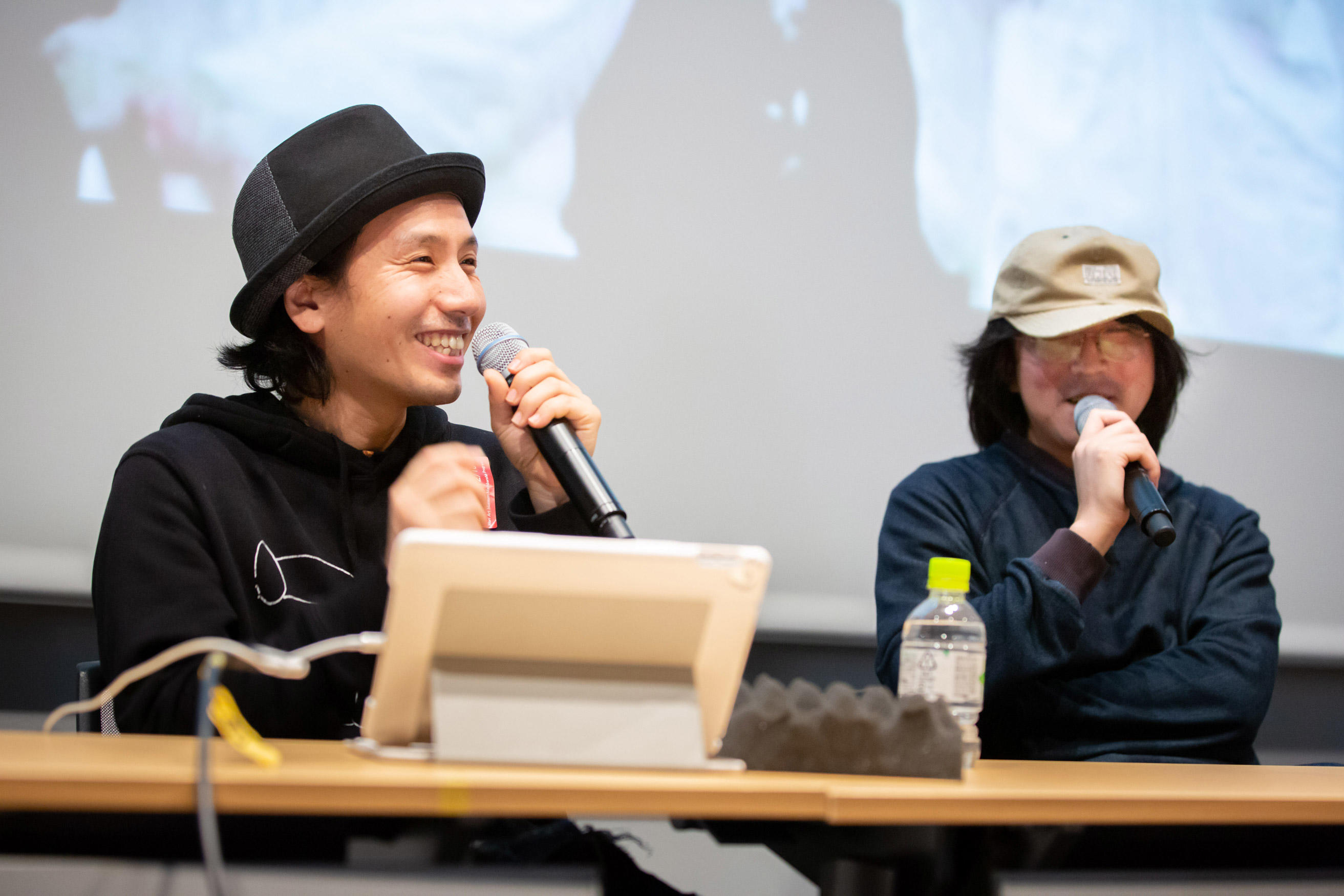

As the makers of video REAL TIMES, featured in Catastrophe and the Power of Art, the pair discussed conditions during the filming, and their thoughts on the experience.
REAL TIMES was video-recorded about a month after the explosions of the reactor building at the Fukushima Daiichi Nuclear Power Plant. Time was running out for private individuals to access the area on their own initiative, so they only checked out the location once prior to filming.
With no information, and filming amid the invisible threat of radiation, Ushiro commented that he was probably the most scared. His talk on the shoot was interesting throughout, eliciting some unexpected laughs from the audience, but it was obvious that at the time, there was very little to laugh about.
Ushiro noted that the mood on a Chim↑Pom filming is usually pretty upbeat, but on this occasion they were all lost for words. In the video two members appearing to be wearing so-called protective clothing, but apparently during the filming Ushiro and Okada were dressed in very basic outfits that could in no way be described as protective gear, consisting of goggles, raincoats, and multiple surgical masks on top of one another. No doubt some MAMC members wondered why they were this desperate to film at Fukushima, but one got the sense that this is very much Chim↑Pom’s chosen means of expression, not something they were doing just out of interest, or for a laugh.
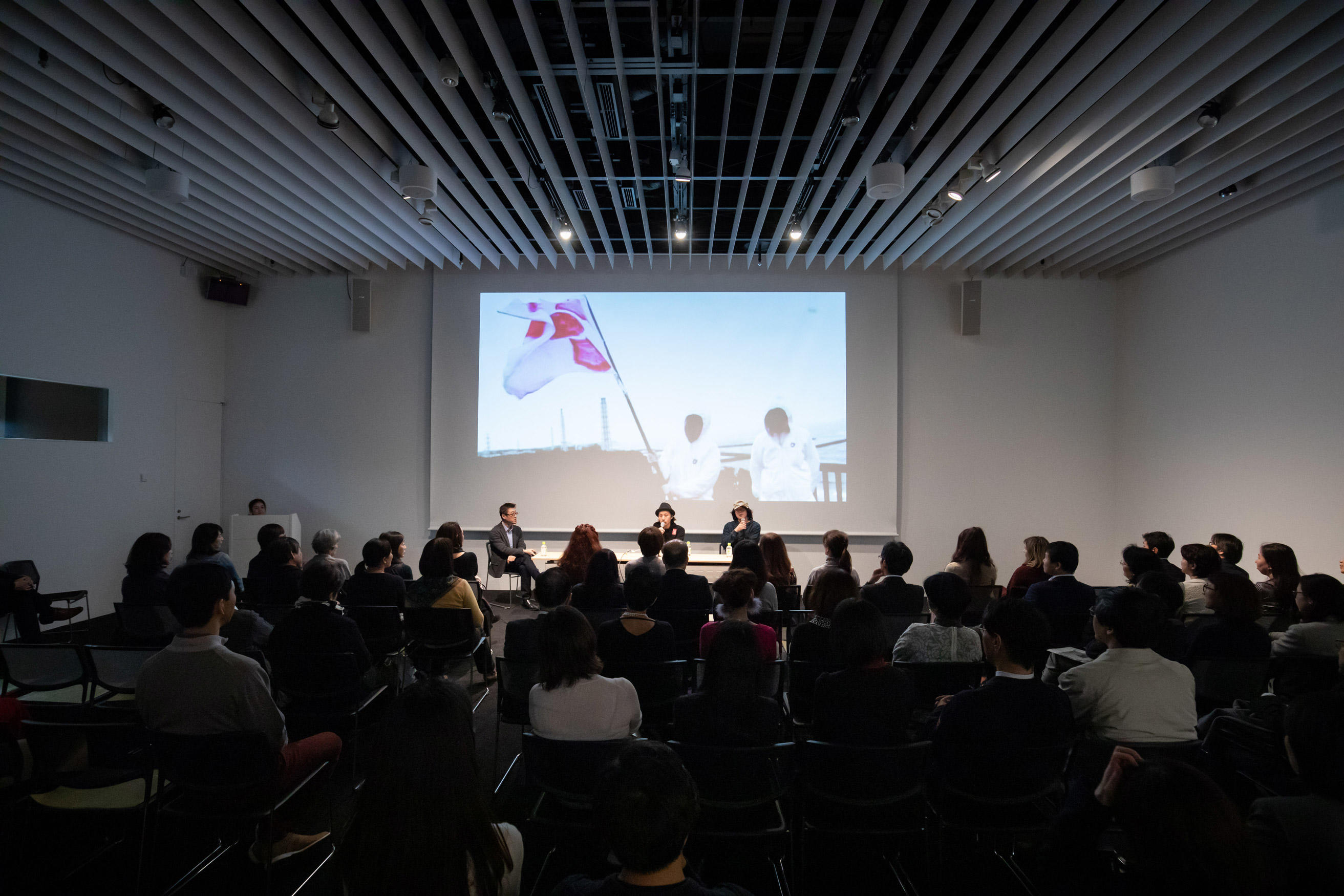

Chim↑Pom generally have a number of projects in progress simultaneously, and in Fukushima, Don’t Follow the Wind, a committee-organized exhibition conceived by them, is currently underway.
Don’t Follow the Wind is an international show running since 2015 in the least accessible part of the difficult-to-return zones, featuring works by twelve Japanese and overseas artists/artist collectives. Curator Kondo added that all the proper procedures were followed to stage the exhibition, with works being displayed in local homes, storehouses and other buildings, following discussions with local residents forced to evacuate. Of course, until the difficult-to-return zone designation is lifted, nobody will be able to visit the exhibition in the ordinary manner.
Mention was made of Ai Weiwei’s Ray of Hope, one of the works in the Fukushima exhibition, the artist also appearing in Catastrophe and the Power of Art.
Ray of Hope is a warm yet heartrending work consisting of lights going on in an empty difficult-to-return zone house. Solar panels have been installed on the house, and a timer set so that their stored energy is used to turn on lights in the house at night, and in the early morning. The location is inaccessible at nighttime, so they said nobody, even they, had ever seen the work. About a year after its installation, a camera with a timer was set up in front of the house, and on watching the recording the next day, Ushiro was touched to see that the lights were in fact going on. He also showed photos of this during the talk.
All the works are maintained regularly, apparently, and Okada had just been to Fukushima the week before this MAMC event. He noted that it had been looking very different to that first visit.
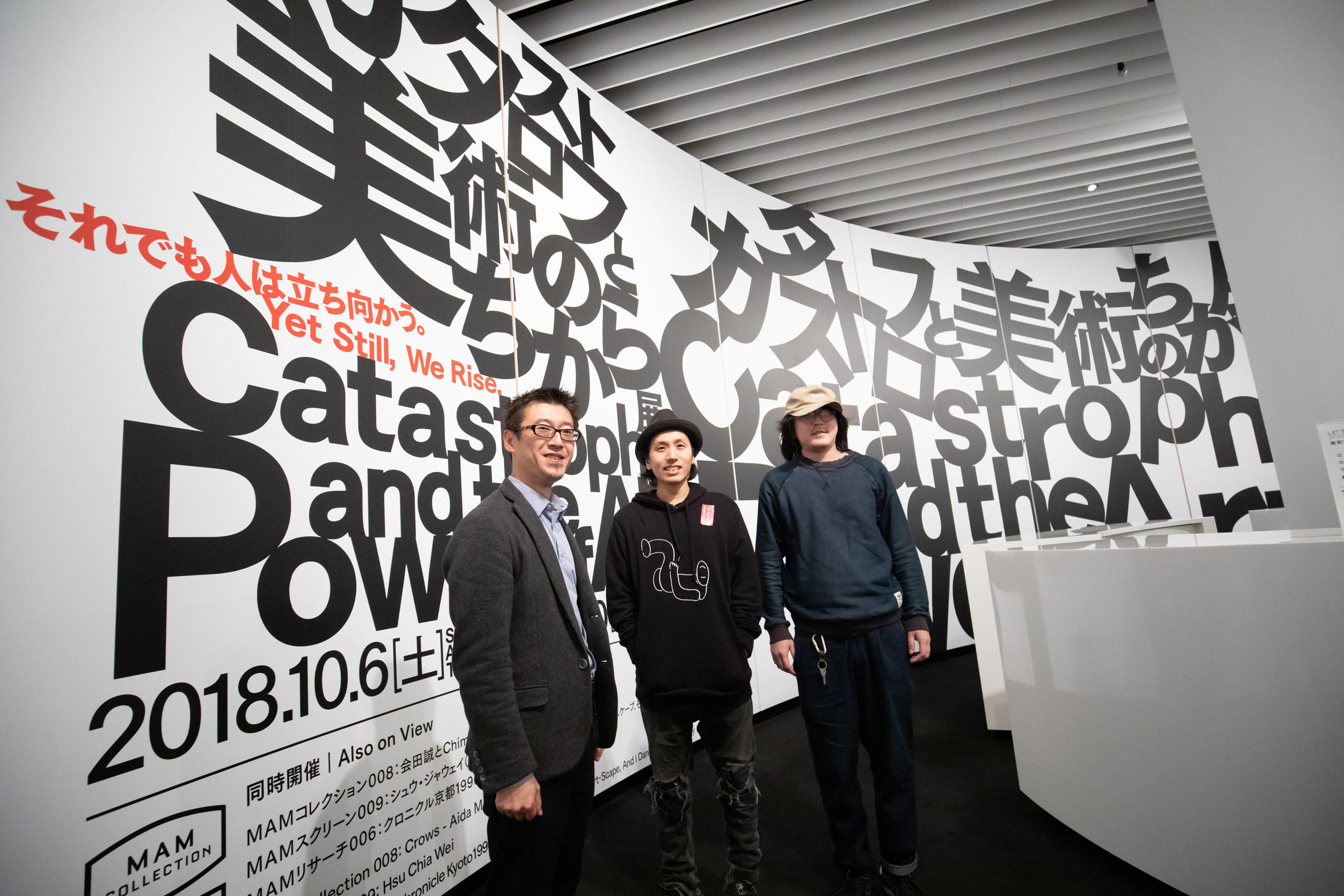

Text: Imamura Akiko (Marketing Group, Mori Art Museum)
Photos: Tayama Tatsuyuki



